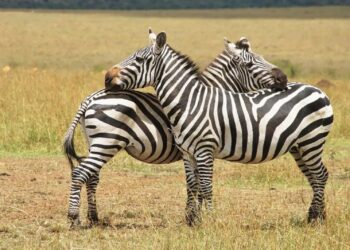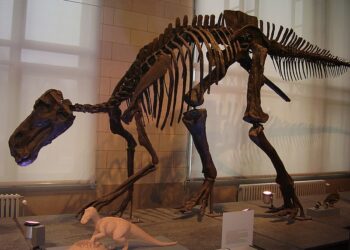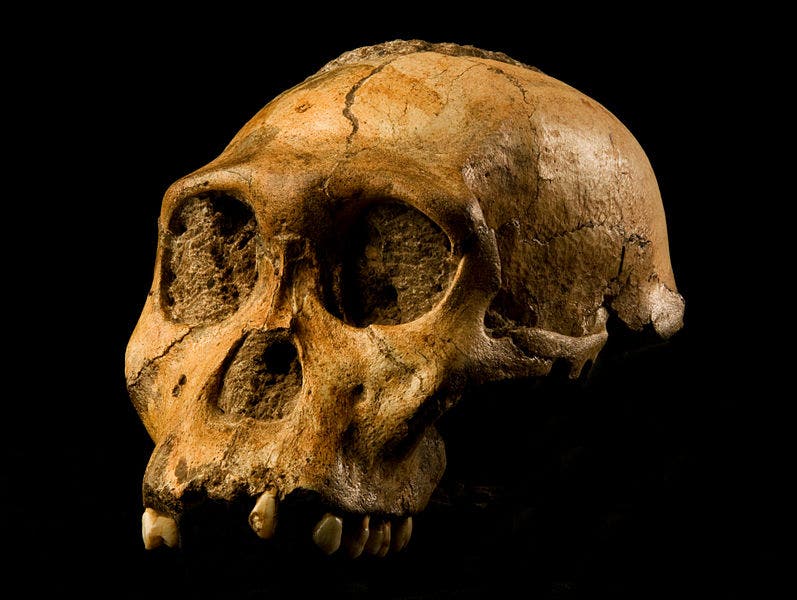
By the time “Lucy” took her final steps across the Ethiopian landscape 3 million years ago, her kind may have been living in a social world far more combative than we once imagined. A new study reveals that males of Australopithecus afarensis — the species that includes the famous fossil — were dramatically larger than females, a sex-specific size difference greater than in modern humans and perhaps even some great apes such as gorillas.
The finding also applies to Australopithecus africanus, a closely related species from southern Africa. But the two species did not share the same degree of difference. That gap between them, scientists say, could point to a surprising diversity in social structures among our early relatives.
Size, Competition, and Survival
“These weren’t modest differences,” said Adam D. Gordon, an anthropologist at the University at Albany and lead author of the study. “In the case of A. afarensis, males were dramatically larger than females — possibly more so than in any living great ape.”
Such size gaps, known as sexual size dimorphism, often reveal patterns of behavior. In primates, high dimorphism typically aligns with intense male–male competition and polygynous mating systems, where dominant males control access to multiple females. Low dimorphism, by contrast, often involves pair-bonded relationships (i.e., monogamy) and lower competition.
Modern humans fall somewhere in the middle, with men generally taller and heavier than women but with a considerable overlap. Humans are classed with a low to moderate sexual size dimorphism. The new findings push early hominins toward the gorilla end of the spectrum, at least for A. afarensis. Male gorillas can weigh twice as much as females (180 kg vs 90 kg, respectively), whereas in humans, males are only about 15-20% heavier.
Gordon’s previous research found that high sexual size dimorphism in primates is associated with resource stress. In times of food scarcity, smaller females may have had an advantage in surviving and reproducing. Because they’re smaller and need fewer calories, small females can survive on less food than their larger peers, leading to more offspring with smaller mothers in the next generation and a resulting greater difference in male and female size.
“This study provides strong evidence that sex-specific evolutionary pressures — likely involving both male competition for mates and resource stress — played a larger role in early hominin evolution than previously believed,” Gordon said.
A Midpoint in Evolution

Australopithecus afarensis blended ape-like and human-like traits in a way that made it unlike anything alive today. Its arms were still long, well-suited for climbing, and its brain was small — about a third the size of our own. Yet A. afarensis was fully bipedal, leaving behind footprints in Laetoli, Tanzania, that reveal a confident, upright gait. Those tracks, pressed into volcanic ash 3.66 million years ago, are among the earliest direct evidence of our ancestors walking as we do.
Paleoanthropologists have long regarded A. afarensis as a strong candidate for a direct ancestor of modern humans. Its time frame, between 3.9 and 2.9 million years ago, and its location in East Africa put it in the right place to give rise to later species such as Australopithecus africanus or early members of the genus Homo.
A Bulky Ancestor Or Just a Different Path?
Whether A. afarensis was highly dimorphic or more like modern humans has been a point of contention. One obstacle was the fossil record itself, which in this time period is fragmentary, incomplete, and often missing crucial skeletal parts. Gordon overcame this by using a geometric mean method to estimate body size from various bones, then running iterative simulations that filled real-world fossil gaps.
Comparisons with modern gorillas, chimpanzees, and humans revealed the differences were not subtle. And by testing fossils from the Hadar Formation in Ethiopia across 300,000 years, Gordon ruled out the idea that the variation reflected evolutionary size changes over time (there were barely any).
That leaves sex as the most likely explanation — and with it, a window into social life. A. afarensis may have lived in hierarchical groups dominated by large, competitive males, while A. africanus, with its smaller gap, could have been under different evolutionary pressures, perhaps mirroring our hominin ancestors.
“We typically place these early hominins together in a single group called the gracile australopiths,” Gordon said. “And while that’s true to a certain extent, the significant difference in the amount of dimorphism in these two extinct species suggests that these closely related hominin species were subject to selection pressures more distinct than the selection pressures applied to any pair of similarly closely related living ape species.”
This suggests that our evolutionary past was not a straight path toward the social patterns we see today. Instead, it was a branching landscape of competing strategies, where size — whether large or small — could make the difference between passing on your genes or vanishing from history.
The new findings appeared in the American Journal of Biological Anthropology.






